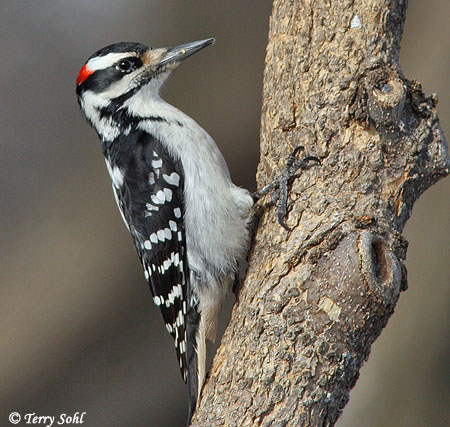

In fact, even in winter when insects are sparse, these woodpeckers keep busy using their long beaks to probe under or between bark in search of insects.įor more on feeding backyard birds check out these articles on The Tufted Titmouse, Seed cyclinders, Attracting Orioles, attracting Indigo Buntings. They will also readily take the black-oil sunflower seed in the feeders.Īlthough they are among the most frequent visitors to our feeders, their primary food source is without a doubt insects and larvae of all kinds. It’s also common to see them flitting about searching out the Bark Butter and DIY feeders I leave on home-made snags that have been set up around the feeders. Woodpeckers are probably the most common bird at our feeders most winter days.īetween the Downy, Hairy and Red-Bellied there always seems to be at least a couple working the seed cylinder that sits atop our feeder pole, or one of the many suet feeders that provide them with a high-fat source of food when the weather turns colder.

DOWNY WOODPECKER VS HAIRY WOODPECKER PATCH
This species looks very similar but lacks the large white back patch and has more white on the side of the face. Red-cockaded woodpeckers ( Dryobates borealis) overlap with the downy woodpecker in southeastern states from Eastern Texas through Florida and north to Virginia.This species has clearly defined black and white stripes across the back. The Ladder-backed woodpecker ( Dryobates scalaris) overlaps with the downy woodpecker in states like Colorado and northern Texas.Its head is also more boldly marked with less white plumage. This species has black and white barring across the back without the large white patch. Nuttall’s woodpecker ( Dryobates nuttallii) overlaps with the downy woodpecker in California.

The outer tail feathers of the downy woodpecker are also spotted in black, while they are pure white in the hairy woodpecker.Ĭheck out this article for a more in-depth look at the difference between hairy and downy woodpeckers Hairy woodpeckers are much larger than downy woodpeckers and have a proportionately much larger bill. This is probably the bird that is most likely to be confused with the female downy woodpecker. The hairy woodpecker ( Dryobates villosus) overlaps with the downy woodpecker across much of the United States and Canada.
DOWNY WOODPECKER VS HAIRY WOODPECKER HOW TO
Read on to learn how to tell female downy woodpeckers from some similar species. The female downy woodpecker is quite easily confused with other woodpeckers from the Dryobates genus, especially where their distributions overlap. Read on to learn more interesting facts and useful methods for identifying female downy woodpeckers out in the field.ĭistinguishing female downy woodpeckers from similar species Female downy woodpeckers are also more likely to be seen foraging for insects on the trunks of trees and other major branches.Īpart from the absence of the red nape bar, there are important behavioral clues that can help birdwatchers distinguish female downy woodpeckers from males. The easiest way to tell female downy woodpeckers from males is to look out for a red spot on the back of the head. If you have a backyard bird feeder, you might well be visited by these birds, especially if you put out suet. These busy birds are common in a variety of woody habitats and are no strangers to backyards.ĭowny woodpeckers do not migrate, so you can see them throughout the year in suitable habitats. The downy woodpecker ( Dryobates pubescens) is the smallest of the North American woodpeckers and can be seen across most of the United States and Canada. Can female downy woodpeckers raise young alone?


 0 kommentar(er)
0 kommentar(er)
